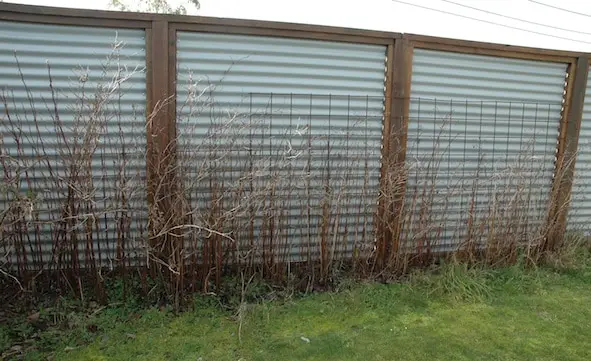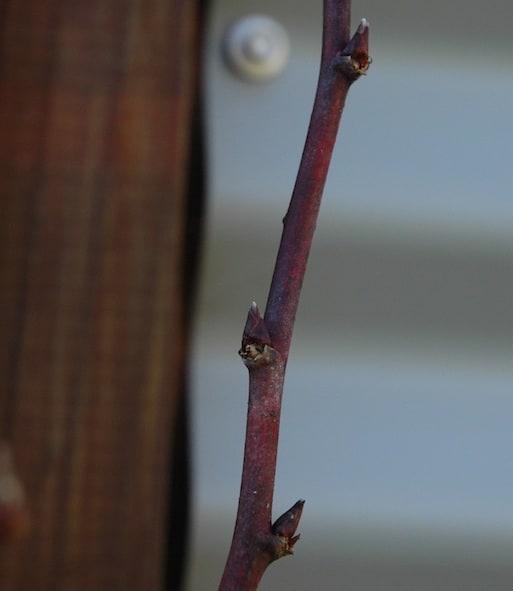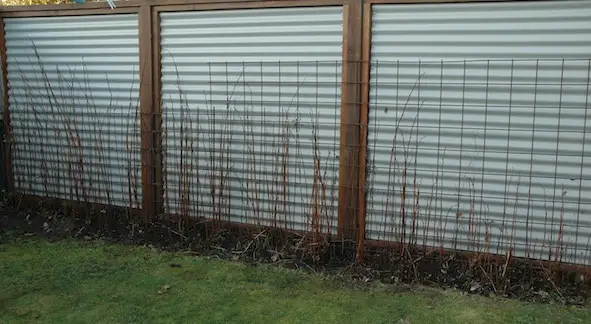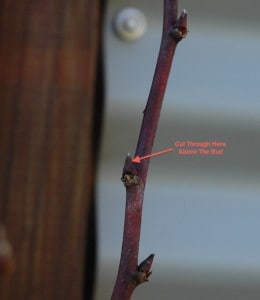The berries we grow in our garden are a firm favourite for our family.
Strawberries, Boysenberries, Blackberries, Blueberries and definitely Raspberries.
You can’t beat a bowl of Raspberries with a sprinkling of icing sugar or a scoop of vanilla icecream, or a jar of fresh home made Raspberry jam.
When we first planted our Raspberry patch, we planted just one cane. That was 4 years ago and this is just some of what we have now (there’s more on the other side of this same fence).
 Well that was what we did have, before we got pruning.
Well that was what we did have, before we got pruning.
You can see in this picture that there is a lot of woody looking canes, and it’s just a bit of a mess really.
This is what our Raspberry patch looks like at the end of the season. All the fruiting canes have died off, and the new canes that will fruit in the next Summer are strong and ready to go.
It’s at the end of every fruiting season that you need to prune back all your old Raspberry canes, and prepare your patch for the next season.
But a lot of people, new to growing Raspberries, aren’t sure which canes to prune away and which ones to leave.
I could give you the easy answer and say to just prune out the old, dead wood and leave the new canes, but you want to make sure you know exactly which is which before you get cutting, right?
Old Raspberry Canes
The old canes, those that fruited last year, can be distinguished by their colour and texture.
You’ll notice that in the photo above, there are some paler looking canes, particularly at the top. These are the old canes. They tend to get lighter in colour as they lose their density.
They will also become brittle. Old canes can easily be snapped off and can almost seem hollow and papery.
And there won’t be any new growth on the old canes. You won’t see any buds or healthy growth of any sort on them.
New Canes
Every year your Raspberry plant will push out (from it’s trailing root system) a whole lot of new canes to fruit on in the year following.
With one plant you can quickly end up with a LOT of new Raspberry canes. Be warned, they can be a bit obnoxious and you can end up with Raspberry canes everywhere, even in your lawn.
Your new canes will be a nice rich brown colour and will be flexible and strong.
If you’ve left your pruning a little later (which I recommend if you’re still really unsure), you’ll see little buds like the ones below forming.
 You can see the strong, woody colour of the cane here.
You can see the strong, woody colour of the cane here.
These buds are obviously the leaves ready to form, which tells you it’s a new, live cane.
Pruning Your (Summer Bearing) Raspberries
So pruning Raspberry plants really is easy.
When the fruiting season is done or, at the latest, during the middle of Winter before the Spring growth starts (be careful with this as we had some unseasonably warm days and the buds leafed up in the last week of Winter!), you need to go through your Raspberry patch and prune out all the old canes, cutting them off right at the base of the cane.
Take out everything that’s old, and any new canes that are a problem. For example I cut out any canes growing out and away from the patch, or any that look damaged or diseased.
It’s also a good idea to keep your Raspberry patch to a confined size and area. You don’t want them trailing everywhere, for obvious reasons, but it can also be detrimental to the health of your plants to allow them to send of new canes far and wide. Keep them in a condensed patch, and they’ll be healthier.
You also want to prune your new canes down to a good length (about 4 foot) so that not only will your Raspberries be at the right height to pick, but you’ll also get bigger, juicier Raspberries. Prune the tops off on very a slight angle, just above the next bud down from the height you want your canes.
When you’re done, you should have a nice tidy Raspberry patch that has plenty of air and sun going through it.
Here’s ours after it has been pruned.
 Plenty of strong, healthy canes left, ready to produce a huge load of fruit this Summer.
Plenty of strong, healthy canes left, ready to produce a huge load of fruit this Summer.
So don’t be afraid of pruning your Raspberry patch. It’s not difficult and, to be honest, you can’t really get it too wrong. Even if you do prune out some new canes, you’ll probably have plenty of others still to fruit. And if you didn’t read this first, and pruned away ALL your new canes, don’t worry, they’ll be back with a vengeance for next year. You may just have to buy your Raspberry Jam this Summer ; )
Note: Ever-bearing Raspberries can produce one or two crops, depending on your pruning. If you want just one crop, prune as above. If you want two crops, only prune out the damaged or diseased canes at the end of the season and allow the fruit to bear again on 2nd season canes as well as the new canes.
Want to know more about gardening ?
Fill in your email address in the form below and you'll receive all the latest updates directly in your in-box.
Thank you for subscribing.
Something went wrong.

Hello Rachael!
I want to ask if you know much about DRYING herbs. Our mint is not as lavish as yours BUT we have been making fresh mint tea with it. It is just delicious COLD.
I am wondering is there any special tip about drying the mint NOW so that we can have mint tea in the Winter?
Many thanks!
Ann Watson
Hi Ann
Mint can definitely be dried now, for use later on.
I use the Excalibur Dehydrators for all my drying whether it be vege, fruit or herbs. They are absolutely excellent and do the job in half the time of cheaper dehydrators.
The key is to dry the mint really well, to prevent it rotting, and to dry it as soon as it has been picked fresh, to retain the flavour.
If you have any other questions, just let me know : )